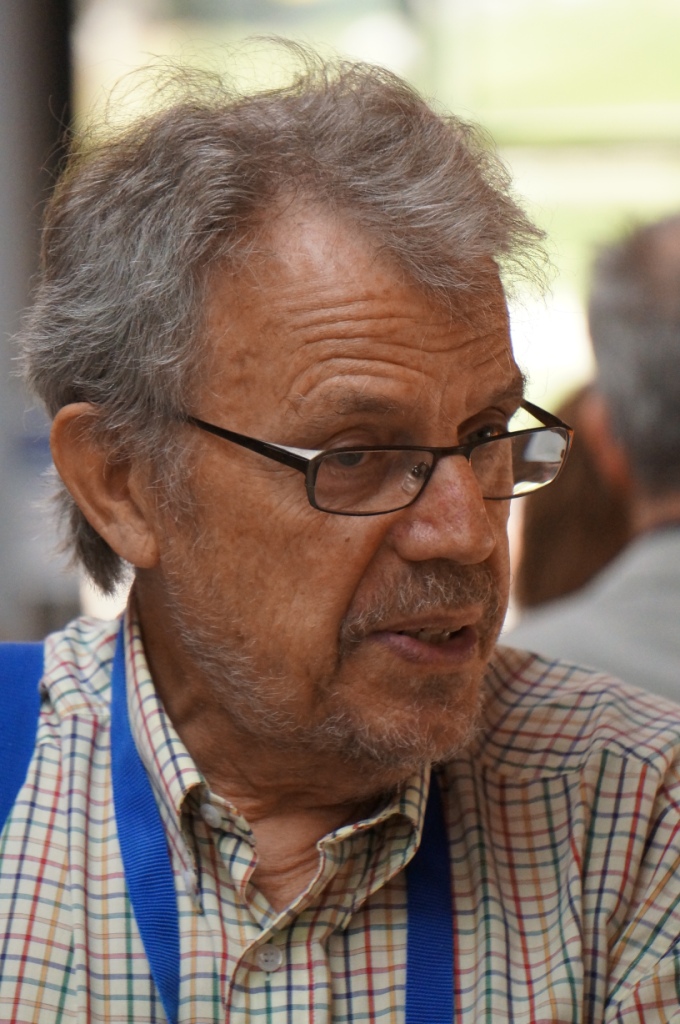AESOP Silver Jubilee: Special AESOP Presidents Session.
AESOP Silver Jubilee Congress in Ankara, 14 July 2012.

President of AESOP, Kristina L. Nilsson, welcomed all of the AESOP community and proceeded to invite to the stage the past presidents of AESOP. Eleven of them were present, with only Professor Hans Mastop not able to come to the Congress, and the twelfth person invited to the podium was Professor Andreas Faludi, one of the founders of AESOP.
President Nilsson asked each of the fellow Presidents to shortly reflect on the future of AESOP.

Professor Klaus R. Kunzmann, the first President (1987-1990)
- The challenge of planning in the decade(s) ahead will be to explore spatial balances between the market and the state, balances in a globalized world, where financial forces as well as new technologies and logistics dominate local and regional economic and spatial development and, consequently, the conditions of human life, balances between mega-cities and urban villages. Such balances have to be based on social and ecological visions beyond the rhetoric of academic urbanism and journalistic urban poetry. The substantial challenges are known, the challenges of urban and regional growth and decline, the challenges of speeding up and slowing down, the conflicts between social and ecological dimensions of spatial development, the difficulties to find consensus on pathways into the future, the challenge of finding allies in day-today struggles to maintain and improve liveability in cities, regions and countries.
- The challenge of planning education is then to address all the above challenges in programmes at institutions of higher education, where spatial planning is not a recognized as an independent academic discipline, where inter-university competition is dominating policy decisions and financial contributions. The challenge of planning schools is then to find a balance between theory and practice, between academic expectations and professional requirements, between generalist and specialist curricula, between national and international planning cultures, between regional languages for communication with citizens, stakeholders of the private sector, professionals in public institutions and policy makers and legislators, and English as an academic lingua franca. The challenge of planning education, finally, is to teach students how to select and apply information, how to survive in an academic environment of information overload and performance criteria, which are not appropriate for a social discipline, which aims to bridge theory and practice for better life spaces. Planning students have to learn to listen and to speak, how to combine visionary thinking with strategic and pragmatic implementation, how to communicate, cooperate and moderate, how to defend social values, and the protection of the environment in a global market economy,
- The challenge of AESOP, finally, is to support schools of planning in their ambitions and struggles, to promote planning education as an independent academic discipline and to guard the rich diversity of planning traditions and cultures across Europe, while fostering the exchange of ideas, knowledge and experience.

Professor Louis Albrechts (President 1990-1992):
To be relevant and meaningful planning (theory as well as practice) in 2037 must prove that it matters, that it contributes to make a difference in key issues (housing, transport/mobility, climate change, persistent inequality…) at an appropriate/relevant scale level, that it is able to deliver (spatial quality…) and to broaden the scope of possibilities. Therefore, planning needs to become more present and more outspoken in the public debate, able to raise awareness and to think without frontiers. This implies that a more activist way of planning, that moves beyond the boundaries of the profession and the planning laws and regulations as we know them today, is needed. Its content will be given by certain ideals, principles and these norms articulate certain values (justice, equity, accountability). Moreover, western planning theory and practice needs to broaden its scope to conditions/experiences/practices of the global south. Legitimacy of a more coproductive type of planning shall be a main issue. The representative democracy articulates merely political and not all values. So, apart from legitimacy stemming from a representative mandate, in planning legitimacy must also come from its performance as a creative and innovative force and its potential/capacity to deliver positive outcomes and actually gaining benefits also for the more disadvantaged. As the values, interests, views of actors are different we may expect conflicts, clashes between traditionally closed systems (governments, business) and the more open systems linked to coproduction, and tensions between those embedded in the system (politicians, planners…), with access to the system (influential actors) and those who function outside the system (NGO’s, community organizations). Planning therefore is certainly confrontational as it is directed at (structural) change by means of specific outputs (plans, policies, projects) framed through spaces of deliberative opportunities. Moreover, academia and practitioners have to accept that we need different types of planning/planners: planners working in the system and planners working outside of the system. Planning that aims for legal certainty and planning that aims to frame future actions and decisions.
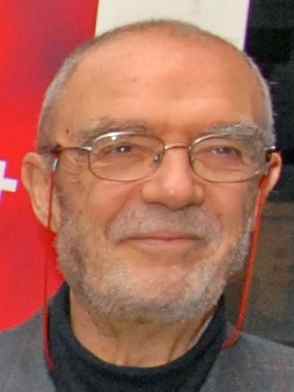
Professor Giorgio Piccinato (President 1992-94):JUSTICE, DEMOCRACY, DESIRE
In the recent decades we were forced to abandon the idea that the city is an organism: in the post-modern metropolis there is no internal consistency, rather there's juxtaposition, coexistence, diversity. This approach seems to deny the plan and the reasons for his claim to act as a control and reorganization of space as a function of an ethical, social and economic justice. Under attack is primarily zoning, accused of imposing monotony and rigidity to a city, which is in fact increasingly fragmented and mixed. Such statement has its origins in a critique of the weberian modernity: against the inadequacies of rationality we discover the myth, against the elusive reality we are content with its interpretation. By now we know that the city is not only its material structure, but also much more: a system of relations, a system of values.
Yet even this different approach may suggest new and perhaps more effective directions. If we take the plan as a project of government rather than a drawing of a preconceived model, we must necessarily activate a dialogue among the actors, and the plan will work as a platform for such dialogue. On the other hand, the recognition of a plurality of actors also involves that of a plurality of objectives. We are also aware that the identification of targets comes through the unveiling-of the various languages that often obscure, in our culture, desires and passions.
What does this mean in terms of planning? That quantitative targets, to which we have in the past delegated the pursuit of justice are necessary, but are not the only ones. How else could we make sense of the urban rebellions, which often result in an immediate deterioration of the material conditions of those same actors? From the peripheries of London, Naples or Paris we received the same images of violence, showing a clear disenchantment of people with their own spatial environment.
Modern architecture, in an attempt to create a space (and a society) of equals, eliminated that symbolic apparatus that has so much part in the traditional city. With great and interested lucidity we had the temples of consumption and financial power substituting those of the civic (and religious) institutions. In doing so we built a hostile space, negation of that pact of coexistence among citizens of what the city has always been an allegory. Among the general context of globalization, from which it is impossible to withdraw, and the thousands local contexts there is an infinite variety of urban situations. This is also the meaning of our work: to recognize disparities, to enlarge citizenship rights. We must draw a space of democracy, open meeting, innovation, emotion. In this sense it might be necessary to give back value to the mingling of arts, which more than any other element point to arouse emotion, and recognise that the right to beauty exists for all citizens. Democracy is built also on these values and, after all, this is what planning was always about.
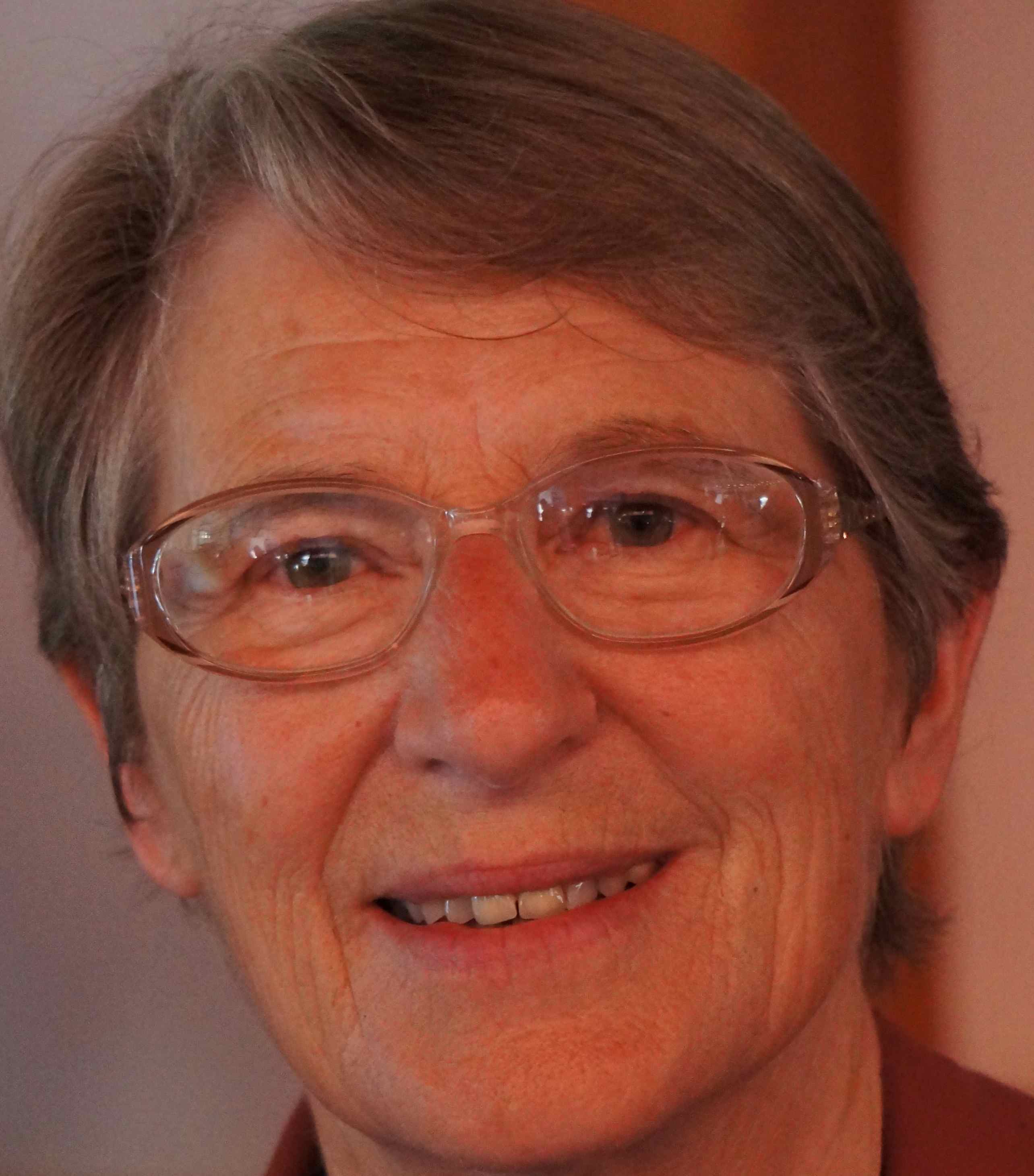
Professor Patsy Healey (President 1994-96): THE POTENTIAL OF THE PLANNING ‘DISCIPLINE’
As I have argued elsewhere, the key contribution of the ‘planning discipline’ is to generate knowledge, ideas, values and development skills to assist in the challenge of enhancing place qualities in ways which promote greater liveability and sustainability for us all in our capacious but vulnerable planet (Healey 2010). This challenge grows ever more pressing and complex. The societies we live in are not only increasingly interconnected, but also share in urbanised lifestyles and aspirations. Despite these interconnections, our lifestyles and aspirations are very varied, and the way we live now is riven with unsustainable practices and gross inequalities. Planning expertise in this context is drawn upon both to suggest ways in which place qualities might be enhanced in particular places, but also to find ways through destructive conflicts and to reach towards more just and sustainable worlds. The challenge for planning academia in the twenty-first century is to enrich the evolution of social action and public policy focused on place quality and to do this in ways which foster the flow of ideas between the many arenas engaged in shaping urban and regional governance.
But what actually are we to mean by the planning ‘discipline’? Academically the planning field has grown since the 1960s into a significant field of academic inquiry, education and professional practice. Yet this growth has always been in the shadow of the expansion of scientific and social scientific disciplines in the 20th Century. Our field is often criticised for its eclecticism, drawing on other social theories and techniques, the design disciplines of architecture and engineering, as well as philosophical inspirations. It is often claimed that we lack a coherent core of theory and method, and that we are too focused on addressing practical challenges. Yet openness is also a strength, and engaging with the practical world surely a quality which is to be valued, not dismissed, so long as this engagement is undertaken critically, ethically and with skilled capability. After all, a discipline is only a tradition of conceptual discussion and empirical inquiry, which has developed over the years, with origins which lie in social and political purposes.
If I am right that our kind of expertise has much to contribute in the years ahead, then we academics working in the planning field need first of all to promote and enhance the quality of our scholarship. We have made major advances in recent years, but our work is still uneven in quality. This is where attention to the history and traditions of our ‘discipline’ can be helpful, as a reminder of how thinking about recurrent key issues in our field has evolved. This helps us to avoid rediscovering too often what we knew well before. Yet too much loyalty to an intellectual tradition can lead to introversion and closure. Instead, we should maintain our openness to new ideas and inspirations. We should enhance and celebrate our involvement in practical endeavour, both as actors and as critical inquirers. Yet we should receive these new ideas, inspirations and practical experiences with thoughtful evaluation. This means testing them against a deep knowledge of our disciplinary traditions. It demands skill in critically probing the meaning and relevance of new insights to the key concerns of our field. It requires imagination in conducting empirical inquiry and capability in translating academic insights into practical activity. If we persist in this endeavour, then by 2037 we should command respect from all those who value the intelligent application of knowledge to action, and who appreciate the role of place qualities in making for a more livable and sustainable world.
Professor Andreas Faludi (AESOP Honorary Member, one of the founders of the Association):
In a classic article, Paul Davidoff wrote in 1965:
‘The prospect for future planning is that of a practice which openly invites political and social values to be examined and debated’.
What would Davidoff say about the prospect of future planning now? Then, planning was pursuing the ‘unitary plan’ ideal that ‘…only one agency in a community should prepare a comprehensive plan’, but a plan was the outcome of a clash of values, hence the title of the article: ‘Advocacy and pluralism in planning’. It was a rallying cry to give disadvantaged groups a voice.
In looking to the future, we can do worse than revisit Davidoff article, which was a call for enriching comprehensive – now we would say integrated – planning. In view of a cosmopolitan society emerging, what would Davidoff say about enriching it further? He would exhort planners to pursue issues rooted, not only locally, but regionally and even globally. As he did back in the sixties with the disadvantaged in poor neighbourhoods, he would make us see the need for advocating global interests becoming manifest in each and every locality. Representative democracy operating in closed territories, like wards, electoral districts, regional constituencies and nation-states cannot deal adequately with a networked world. In working for the preservation of a world of closed communities, it is becoming conservative.
Preserving core democratic values requires reconsidering representative democracy, a task beyond our wits as planning educators. However, we need to alert planning students to the issue and make them curious about ways of tackling it. For the rest we need to trust the every-day cosmopolitan instinct and the willingness to explore and to experiment of the next generation.
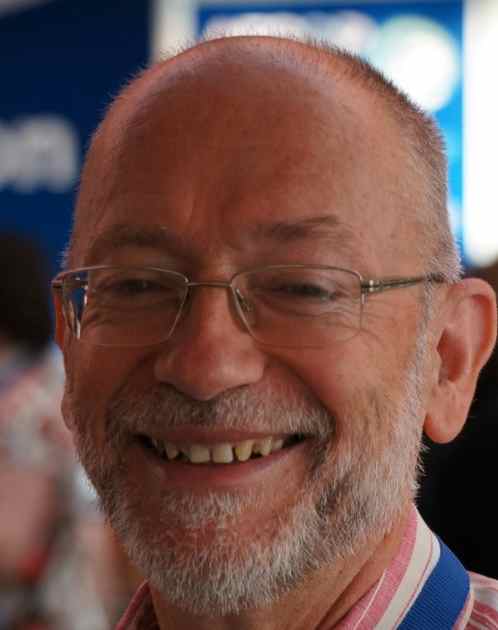
Professor Marcel Bazin (President 1996-98)
In my view, another important change of these last decades is the shift of planning from (various) products to a process.
The time of “merchants of happiness” is over, I mean the time when a planner could pretend to rest firmly upon scientific analyses, a set of theories and a clear idea of general interest in order to propose an ideal organization of space and built environment.
But to propose it to whom??? Generally, to the rulers of the political or economic sphere, that would adopt these proposals as theirs and impose them, rather than propose, to the inhabitants seen either as voting citizens or as consumers of goods and services. At the end of the chain, the lack of appropriation by the people supposed to benefit from the planners’ action was often the first symptom of failure.
In fact, planning as a process involves various actors all along its different stages: conception, implementation, evaluation. Thence more and more complexity, now and in the future, since these actors are more and more numerous, decentralization having led to the multiplication of territorial collectivities between the State and the population, while private-public partnerships bring other stakeholders into the process.
More partners involved bring more material resources and facilities, but this always means more time spent in the process. This is quite an important issue: organizing social space cannot be done properly without controlling time as well, and various actors have different temporal schedules.. Developing participation always needs more time, but this time consumption isn’t a loss if it brings finally a more efficient participation during the conception stage, and a deeper appropriation of the result.
Taking part in participative projects needs both good information and an improved “spatial (and temporal) culture”, or at least sensitiveness, throughout the citizens. Thus education to spatial and temporal issues has to be reinforced. Integration is another key issue, and must resist to all forces of exclusion, ultraliberalism as well as nationalist or integrist hatred.
Thus planning will remain deeply rooted in vital questions for our societies: education, equity and democracy in its full meaning.
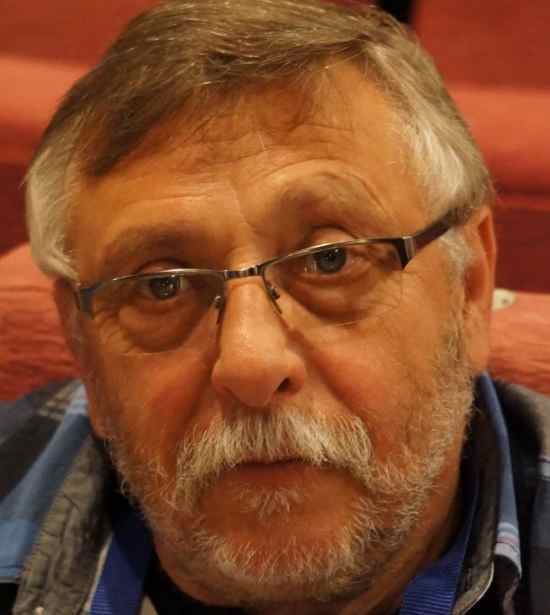
Professor Tadeusz Markowski (President 1998-2000): PLANNING MUST BE RADICALLY CHANGED TO COPE WITH GLOBAL CHALLENGES
Planning in the public sector in general, and spatial planning in particular, is facing significant challenges resulting from globalization of the economy, i.re. transnational transfer of capital, people, production, investment in real estate, speculation, etc. Recent crises of global economy exposed this problem much more clearly than ever before. In this light traditional methods of planning are no longer sufficient for controlling urban development – we are always too late to anticipate forthcoming processes of the physical development. This leads to economic and social costs of insufficient planning which are indeed tremendous. Complex economy requires an efficient institutional system of intervention, yet we observe governmental failure of both national and local levels on a growing scale.
What is more, changes in the role of spatial planning as a policy tool are very strongly limited by national legal systems, which differ from country to country and are often misused by globally competing international corporations and developers. This means that in the next 20 years, sooner or later, planning must change its role in radical way. On the one hand it must be more connected with international system of regulation, capable of coping with growing uncertainty, more flexible and open in certain fields, but on the other hand it ought to be more restrictive, providing a similar level of restriction on the global level. We therefore need to elaborate a new model of planning and prepare a new generation of planners who will be able to cope with these challenges. Needless to say that fast and rapid urban processes in developing countries will also influence the European system of planning. If we do not adjust our approach to planning in proper time, making it – for example – a tool capable of diminishing global real estate market failure, public planning will be ignored and further dismantled by both politicians and multinational corporations. The social cost will be tremendous, the paradigm of smart growth will be in danger and nations’ response to climate changes will remain restricted and meaningless.
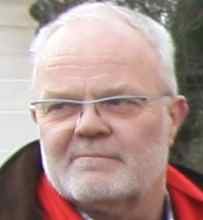
Professor Hans Mastop (who not being present in Ankara has given us permission to publish his statement, President 2000-2002):
Unfortunately I could not make it to Ankara, but in my 3 minute, 300 word statement on the future of planning and planning education two words would stand out: globalisation and climate! The overwhelming influence of what's happening in these two spheres on our living conditions, and the effects that go with it, in the economy, in the environment, with flooding and droughts, in growing global interdependence, shifting political power balances, powers of multinationals, and more of these, are hardly understood. Yet we have to face these. In this respect there is little new to add to the statements of e.g. Tadeusz Markowski, Alessandro Balducci or Andreas Faludi.
As planners we have to be modest, our role in essence is limited to place-making, to preparing our places, cities, regions, our states perhaps, to new chances and threats. Our strategy must be adoptive, adaptive and collaborative, like John Friedman already wrote in his 2005 Progress in Planning review of Globalization and the emerging culture of planning.
As educators we must prepare our students to their future roles as planners, learning them to face global chances and threats, while accepting that dealing with these is a really localised enterprise, attuned to the specific institutional, political, economic, social, and cultural national settings. As planners, they must thoroughly know these, in order to deal with them in collaboration with other change agents in different circumstances. Participating, in China's vast new towns programme is one thing. Dealing with the world's cultural heritage in urbanization processes on the Italian peninsular quite another. Both need well educated. active, anticipating and imaginative spatial planners.
To finalize I quote John Lennon:
A dream you dream alone is only a dream. A dream you dream together is reality.
but:
Life is what happens to you while you're busy making other plans .
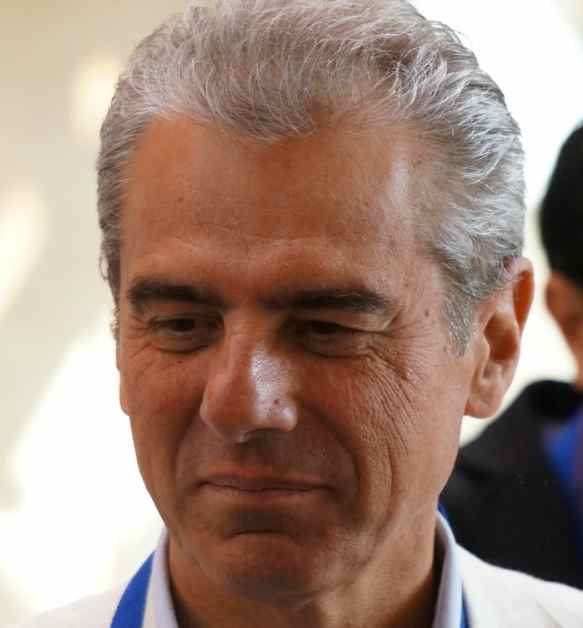
Professor Alessandro Balducci (President 2002-2004):
In three minutes:
A few points, points which I see the critical developments of planning, signs of a transition which finds planners at the border and that I would like to see at the center of the stage.
1. Transition form metropolitan to post metropolitan development formation of mega cities.
I have the impression that planners look at the post metropolitan space with the eyeglasses of the past phases of urban development. Like my friend Ivan Tosics states: we are trying to govern the city and the economy of the 21st century, with the governments of the 20th centuries and with the boundaries of the 19th century. Planners have always been linked to the idea of one plan for one government for one territory. This is not any more the case and there is a great need for changing perspective. Theory is already there. We need a creative effort to redefining a planning activity which is able to give response to the contemporary urban problems.
2. Emerging new media, penetration of new technologies in the urban functions, new means for connecting people and groups, we still focus upon physical connectivity and miss the potentials of an integration between the space of flaws and the physical space. The smart city stuff is in the hands of engineers and ICT people.
Planners need to face the new means of connecting people and of creating a new public space, which has revolutionary interrelations with and anchorage in the physical space. They must open this door and they will find a world of new opportunities.
3. Emerging new risks: climate change, increasing natural disasters, dramatic financial crisis. Planning is called to find post disaster therapies, while, as we have seen in these days, great is the space to use the potential of these overwhelming forces to create a form of development more prudent, aware of limits to growth that we have touched, inspired to a more equitable and sustainable way of using the space. All this needs a renewed planning, more visionary and even utopian.
A couple of points about role and contents of planning itself:
We are all very sensible to the point raised by David Harvey in the opening interview about the increasing disparities and social polarization in the contemporary cities. I do not think that we can do very much about this as planners, but we can do something. First of all we need to know the overall picture of socio-economic dynamics, that we frequently forget. Second we may intervene in some relevant decisions of land and resource allocation. Finally there is something that is really inside our field of competences: the public space has always been the living room of poor people, I think that the increasing disparities should push us to create good public space particularly in the neighborhoods where deprived people live.
A final consideration about the discipline itself. We have assisted in the last 25 years to a process of differentiation between urban design and planning, land use and strategic planning, transport and environmental planning. With great battles about what is the ‘real’ planning. I have the impression that differentiation is natural for a society which becomes more and more complex, but we need to see all the different fields of planning as complementary and capable of cooperation. What if we design a fantastic planning process and we produce on the end an ugly unpleasant space? What if we deliver a great spatial strategy but there is not a patient work of translation of this strategy into rules and projects? I see the future period as a time for reconciliation and cooperation, of what has been seen as alternative in the past.
Twenty-five years ago we al thought that planning would have changed society becoming more and more central in societal development. We have discovered along the years that planning cannot change society but more modestly can operate at the level of place making and shaping.
In the next 25 years we have to rediscover that this more limited ambition, to create (just) spatial quality, is central for the life of individuals and groups.
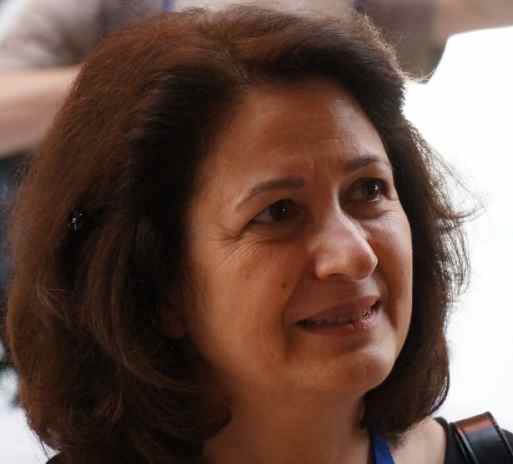
Professor Simin Davoudi (President 2004-2006):
The first question is whether there will be a planning discipline at all by 2040? The short answer is yes for two reasons: firstly, because we will continue to perceive planning as an antidote to uncertainty and an insurance against contingencies; and secondly, because no amount of liberalisation and privatisation can take away the social necessity of some form of regulation and coordination.
The second question is what will the discipline look like in 2040? This is to ask what will its knowledge base, value base, and skill base be?
Its knowledge base will be influenced by two powerful developments: firstly, the interpretive understanding of the relational space and time; and secondly, the evolutionary understanding of change, uncertainty, and complexity.
Its value base will be influenced by the increasing demand for social and environmental justice, both of which will demand more emphases on the outcome (rather than just the process) of planning than we have had so far. So, the discipline will be more engaged with questions of: why do we do planning, what is it that planning tries to achieve, and what is the purpose of planning?
Its skill base will be influenced by: firstly, the change in its value base so we will see an increasing emphasis on advocacy. This means that, planners will be talking about what ought to be done to create better places and for whom. Secondly, the skill base will also be influenced by new advances in technology.
Overall, planning students will be learning the science of probable, practicing the art of possible, and advocating the politics of preferable, to use Alvin Toffler’s famous trio.
In short, by 2040, the discipline will have revisited its roots and revived its tradition of realistic utopianism and a strong sense of social purpose, complemented by strong ecological values. Although these may not be the kinds of things that will actually happen by 2040, I believe that they are the kind of things that ought to happen if the discipline is to remain intellectually robust, professionally prudent, and socio-ecologically responsive.
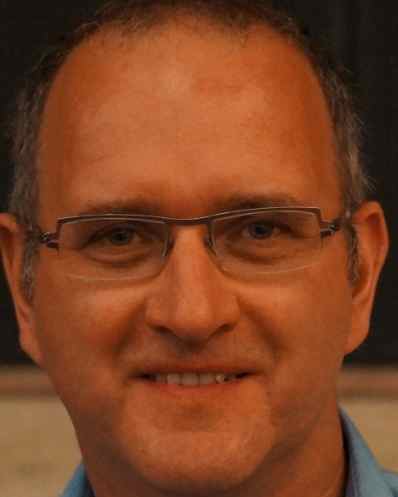
Professor Peter Ache (President 2006-2008):
To give an answer to the question, what the future of our profession will be, I first like to speculate about the future: In 2037, we will live in turn key cities. Companies from the ICT sector, in collaboration with the building and development industries, will provide customised urban settings for each of us to consume. The driver behind those commodified communities is the issue of sustainability; real time information will flow from any part of the city to synapses which closely monitor and manage the urban metabolism. As owner of a mobile phone, citizens are an integral part of this. That locative medium will provide real time information about any item observed and in particular in need to be sorted. What in 2012 was considered a leisure activity, i.e. being the mayor of a mobile phone transmission cell through gaming 'apps', became reality: Repair or re-plan my place in an instance. At a larger spatial scale, these turnkey cities form the modules of a plug-in metropolis, the 70 million inhabitants Europolis, which in itself is constituted as a backbone spanning the core area of Europe. Planners are part and parcel to those developments and their role is that of a manager of spatial change.
Looking at the scenario from a personal perspective, planning as a tactic of socio-spatial innovation needs to resort to new strategies. The planner needs to develop viral features to be able to create social silicon valleys from turn key cities. Which brings us to planning education: The production of hope, the inspiring element, the thinking outside the given boxes, needs to be re-enforced in planning education. At early stages we should run studios with changing topics. Students and teachers need to learn with each other but also with citizen groups. A crucial part is that of imagining or en-visioning different futures. The availability of new technologies will help us here, too: Augmented spaces create new tools for experimentation, with endless mutations and the possibility to assess solutions in a formative way, allowing us to co-create outcomes or adjustments as we progress through time and space.

Professor Wim Salet (President 2008-2010): AFTER THE EUROPEAN NATION STATE
Planners have to cope with various crises in our epoch of ecological, financial and social adversity but my reflection on AESOPs agenda for the next 25 years will not focus on the substantive issues as such. Rather, I will question a principal ‘how’ proposition: the question about how planning schools in Europe and AESOP might make a difference in the search of solutions for these urgent issues.
Considering this challenge two basic responsibilities of planning schools and AESOP are central: the education of planning and the planning research. In both responsibilities the planning discipline takes a characteristic and almost unique position via the tight and specific interconnectivity between the theoretical schools and the practices of planning. Both in teaching and research, extensive networks of collaboration with practices have been established by all planning schools of the European association. Obviously, the different positions of practitioners and scientists have to be respected but - in doing so - the collaboration pays out in a capable and experienced discipline. Adopting specific practices of action is not a common property in the world of science but I consider the interconnectivity between planning theory and practice as the particular capital of the planning discipline. It has cultivated the antenna for learning. Nowadays, planning theory is informed by complexity theories and even by post-normal sciences that social reality is far too complex and that it contains too many uncertainties to be controlled via rational control and rational knowledge of planning. However, it is exactly the tight interconnectivity with practices that made planning theory sensible for these issues already many years ago. The limitations of rational control and rational knowledge became visible first of all in practices of planning. As a science of action and by studying the practices of action the planning discipline has learned perfectly well to distinguish between what fails in practice and that what seems to work. Concepts of rational control and rational action were taught and investigated only in the first decades in the planning history, the contemporary theories have become far more sophisticated and focus on various ways to deal with complexity and uncertainty rather than neglecting these real conditions in rational models of planning. I believe that the experiential search of planning knowledge in practices of social action has given this particular discipline a much higher sensibility for the complexities and uncertainties of social order than adjacent disciplines that consider reality from a spectator point of view. This particular capital will serve the planning discipline as well in the next period of 25 years. AESOP did a good job in promoting this particular relationship in its first period, it should continue this line of priority in the next.
At the same time, we must be aware of the risk of entrapment of the ‘theory and practice nexus’ for local planning schools. Contextualization of planning theory in relevant practices does not mean that planning knowledge is limited to local cultures and local experiences of planning. First of all, territorially bounded spaces have changed themselves during the last decades in trans-scalar realities. Processes of rescaling have challenged the institutionally nested territories of space. Territorial entities, such as the city or the nation state, did not disappear but their meaning and position has become completely different, highly dynamic and trans-scalar. It does not mean that all social practices and cultures - including local planning cultures - immediately adapt to the new conditions. This may take a long period of transition. The current crisis of the European system demonstrates the long residual forces of the nineteenth century nation state from day to day. But the conditions did change and planning schools must take attention of this in rooting their theories in practical experiences. In the second place, the justification and valorization of planning knowledge must fit to the actual conditions, and to the increasing routines that are established for this sake. Within a period of ample two decades, the complete valorization of scientific knowledge - thus also planning knowledge – has been completely adapted to new international and interdisciplinary standards, downgrading the established cultures of previously existing scientific valorization. The major challenge for AESOP – now and in the period ahead – is to cultivate the transition towards the new international standards of scientific valorization. Obviously, the tight relationships with practice urge to double valorization, both in national practical contexts and in scientific domains, but the new standards of scientific accountability require a fundamental change of attitude in the community of planning schools. The conditions of justification and valorization are not met when more than 90 % of scientific output of planning schools still is characterized by place bounded features (local or national languages, self-referential performances of local or national planning cultures).
Here lies an important responsibility for AESOP which is not yet adequately settled. During my time in the AESOP management, I tried to give it priority but it is the type of cultural change that needs structural attention for a longer period of at least ten years. Many colleagues warned me that taking the interdisciplinary and international standards of scientific valorization as the point of reference, would not be fair for the upcoming members in our European association but my concern is not for the upcoming countries. They are modernizing their economy and scientific systems, and they go fast! My major concern is for the planning schools of the leading home countries in continental Europe: in particular Germany, France, Italy, Spain. The problem of the large nation states is that they are large enough to continue self-referential cultures of planning but they are too small to become really points of international reference. They may claim a leading role in Europe but should become aware that the next door neighbors cannot even read their output. AESOPs mission for next quarter of century is to grow from a European association of domestic schools of planning into an association of European schools of planning!
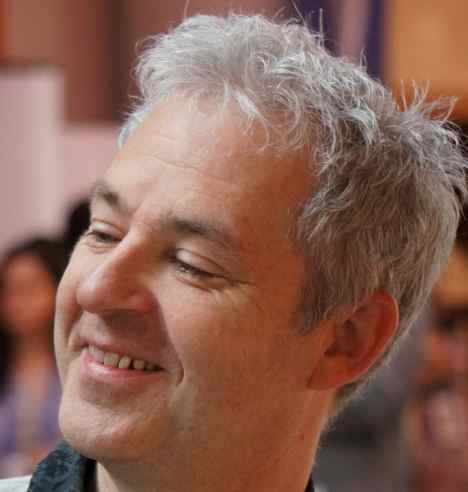
The floor was handed over to Professor Gert de Roo, who was officially taking over the position of the President from Prof. Nilsson during the Ankara congress.
He began by noticing that the words “open” and “innovative” are very often used during the Presidential Session, which he referred to as very positive and lucky for the AESOP community. He went on to praise planners by saying that they try to go and visit places and to be open to other cultures. In turn, he reiterated that we are also teachers and it should be our perception that we need to re-establish our focus onto education. Later, Prof. de Roo returned to the praiseworthy openness of the AESOP community and said that is the element that contributes largely to any success the community has. He capped his speech by once again referring to the young and their training, pointing to the fact that ‘these people will have to keep us going very soon’.

